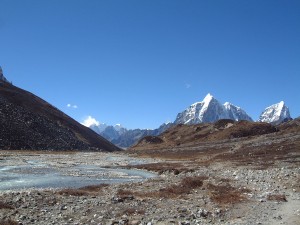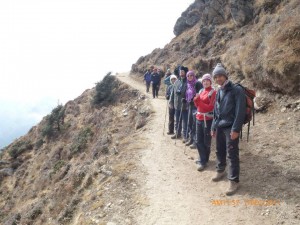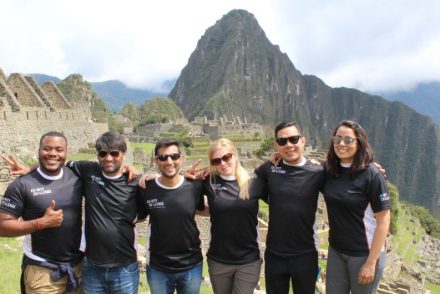The longest and most auspicious of Nepal’s annual celebrations, the 15-day festival of Dashain is also probably one of its most eagerly anticipated. As the skies above the bustling streets of Kathmandu fill with kites, families across the country prepare to don new c lothes and celebrate the victory of the goddess, Durga over the evil demon, Mahishasura. This is a time for celebration and family. It has to be said though, the animal population of Nepal don’t greet the celebrations with quite the same level of anticipation. During the festival goats, buffaloes and chickens in their thousands become an integral part of the sacrifice and the feasting!
lothes and celebrate the victory of the goddess, Durga over the evil demon, Mahishasura. This is a time for celebration and family. It has to be said though, the animal population of Nepal don’t greet the celebrations with quite the same level of anticipation. During the festival goats, buffaloes and chickens in their thousands become an integral part of the sacrifice and the feasting!
The festival begins on Ghatasthapana, the first day of the bright lunar fortnight of the month of Ashvin. On this auspicious day the priests bless the holy water vessel, known as the ‘Kalash’, which is then installed in a prayer room on a bed of soil that is seeded with grains of barley, wheat or rice. For the next nine days these vessels and their germinating seeds are chanted over and nurtured by the most senior male member of the household. By the tenth day, Dashami, the sacred grass (called ‘Jamara’) has reached a length of some six inches and it, along with a mixture of ‘tika’, made from rice, yoghurt and vermillion, is bestowed on the younger members of the family. The red of the tika is meant to signify the blood that binds the family together.
Whilst the celebrations last for 15 days, it is the first, seventh, eighth, ninth and tenth days that are the most significant, with the celebrations reaching their peak on the ninth day. Known as Maha Navami, this marks the last day of Navarati, an occasion honoured by a day of military bands, gunfire salutes and state sponsored sacrifice. Also known as ‘Demon-hunting Day’, this is an occasion for the Nepalese to flock to the Taleju Temple in the heart of Kathmandu to watch the ritual slaughter of buffaloes. This is the only day of the year that the temple is open to the public, but be warned, this is not for the faint-hearted. By the end of the day the temple courtyard is running with blood. On a slightly more creative note (but no less bloodthirsty), the day also sees artisans, traders, factory workers and  taxi drivers offering up sacrifices to the god, Vishwakarma, in the belief that he will bestow his blessing and protection on the tools of their trade.
taxi drivers offering up sacrifices to the god, Vishwakarma, in the belief that he will bestow his blessing and protection on the tools of their trade.
The last day of the festival traditionally falls on the full moon, when it is believed that the goddess Laxmi descends to earth to bestow wealth and prosperity on anyone who remains awake all night. At this time the Kalasha and the remaining ‘Jamara’ grass is thrown into the river…and the animal populations of Nepal breathe a collective sigh of relief!
This year’s festival runs from the 16th – 24th October (Tika and Jamara then continue until the 29th).
To keep up to date on all Charity Challenge news and recieve our latest blogs, please subscribe to our RSS feed via clicking the orange button in the top right, and enter your email address into the adjacent box to subscribe to our mailing list. And for more of Trevor’s view on the world, check out his action packed blog at:http://alizardwandering.wordpress.com/





No Comments